Oh, What a Beautiful Day!
It’s a story he told often: when about 13 or 14 years old, Stephen Sondheim asked Oscar Hammerstein II, to read and review a script he wrote as if was created by a professional playwright. Hammerstein obliged and did not hold back. It was lesson Sondheim would never forget and that would forever influence the wider world of musical theatre up to - and likely beyond - the present day. This is easy to see in Sondheim’s catalog of shows and their subsequent influence on his contemporaries and successors. Yet it extends further to the work and lives of an untold number of those who picked up a pen, pencil, or keyboard, as a young playwright.
The story of Stephen Sondheim’s push to create playwriting workshops for youth in the United States is one I’ve told in research. Surprisingly, I have not yet explored the topic on this blog - something I should soon remedy. The short version is that while in London in the mid-1970s, Stephen Sondheim learned of a workshop for children that taught playwriting and produced their scripts with company actors. Sondheim sought to establish a similar program in the United States via his role as President of the Dramatists Guild, which led to the formation of Young Playwrights, Inc. The program was feverishly welcomed within a short period of time and similar programs popped up throughout the 1980s-1990s. A number of modern playwrights and lyricists participated in these programs - some even saw their work performed by professional actors in New York City. When I began working in educational theatre, one of the first programs I produced was the New Jersey Young Playwrights Festival. I found the work so remarkable that it became the subject of a doctoral dissertation in which I uncovered over 100 similar programs across the globe. Just estimating that each of these programs reaches 100 students per year plus 5… 10… 15… 20 years of work - well, that’s a whole lot of playwrights who have been influenced by Stephen Sondheim. And the purpose of those programs was to give voice and provide feedback to young artists in a similar manner to the meaningful, serious consideration that Mr. Hammerstein gave to a young “Stevie”.
Since wrapping the dissertation, I’ve been casually researching the connection between this two men and the larger influence on the field. At some point, I became aware of the developing attempt to secure Highland Farm, Hammerstein’s former home in Bucks County, Pennsylvania, as a museum & education center. Knowing it was still standing, and not too far from my home at the Jersey Shore, I looked forward to the day when a tour of Highland Farm might gel with my schedule.
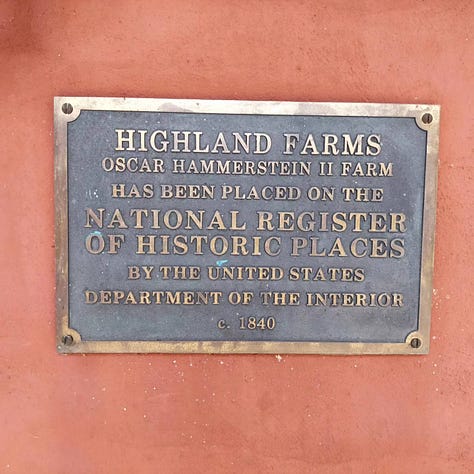
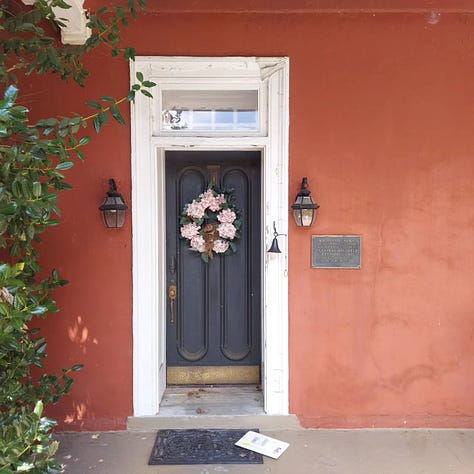
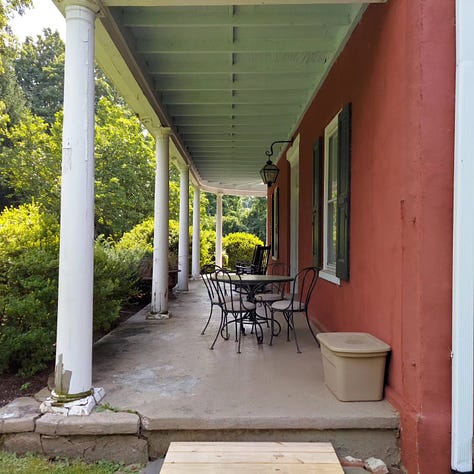
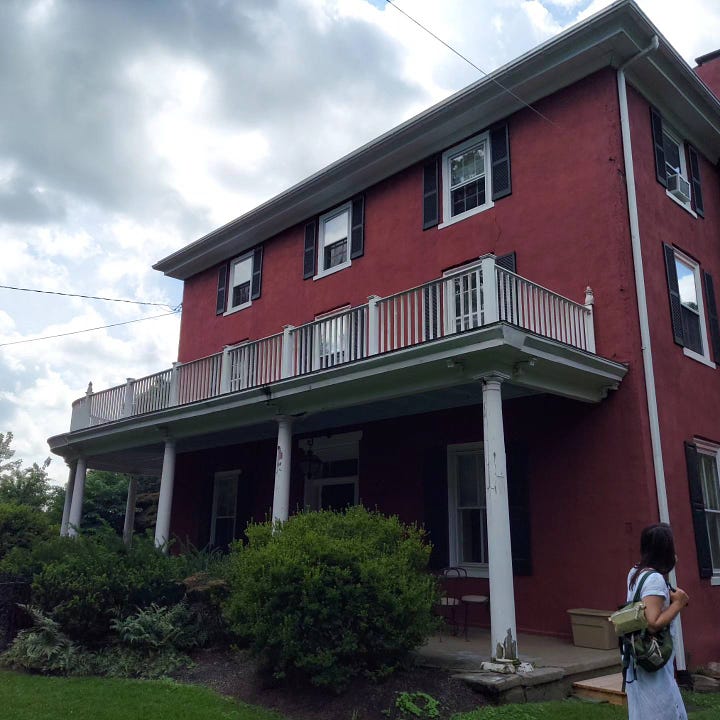
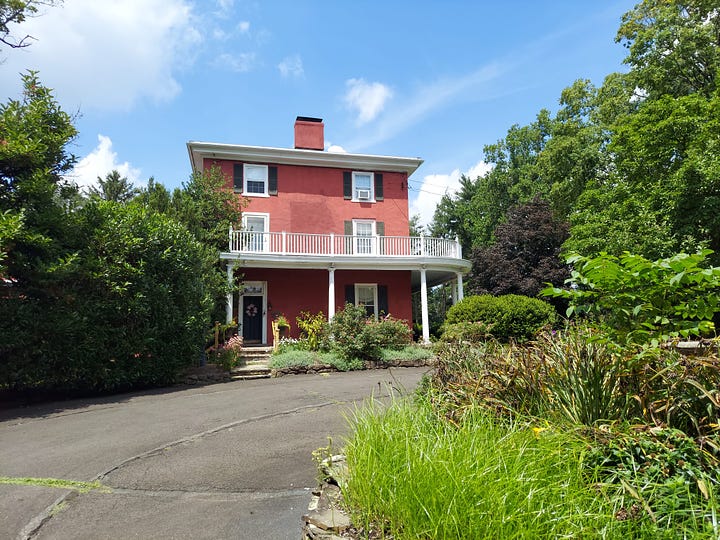
Coincidentally, it wasnt until my oldest son opened a performance as Friedrich in a local production of The Sound of Music that a tour date aligned with my schedule. New tours had just become available for the first two weeks of August when I was teaching a theatre camp at the high school. There was one day - today, August 11 - that worked with our schedule, so I jumped at the chance and planned to bring my son along for the ride.
A few days after booking the trip, I sat in my seat at intermission of the closing night performance of The Sound of Music with the thought: What exactly did Hammerstein think of this show? It is no secret to those who know me - especially to my students - that SoM is one of my least favorite musicals. While hopeful and sentimental like preceding R&H fare, but has always tasted more saccharine. To me, it doesn’t have the same underlying darkness or danger of Oklahoma!, Carousel, The King and I, or South Pacific. SoM does include Nazis, who are the poster boys for darkness and danger, and the second act is definitely emotional, but to me, it just doesn’t hit the same. A Google search into my question wasn’t much help, but it did bring me an NPR piece and an American Theatre article about the book, The Letters of Oscar Hammerstein II by Mark Eden Horowitz, a Senior Music Specialist at the Library of Congress. He compiled thousands of letters and excerpts from the Hammerstein papers at the Library and published them chronologically. I’ve been distracted by some wonderful stories and perspectives in Hammerstein’s correspondence that I’ve not yet uncovered an answer to my query. I’ll get there at some point. For now, I’m enjoying getting to know the man behind the stories through his letters and through his environment.
The trip to Highland Farm was emotional. It was one thing to stand in the rooms where the man lived, worked, played, and mentored. The tour took on new meaning when the group obliged the tour guide’s suggestion that we sing “Edelweiss” - Hammerstein’s last lyrics - in the bedroom where he died in 1960. In her words, it was a fitting prayer to his spirit. From there we crossed the hall into his study and then journeyed to the children’s bedrooms on the third floor. It was in the room given to a young Stephen Sondheim where I was overcome by the importance of the place. Adding to the group’s conversation about Sondheim’s legacy discussed the legacy, I added my perspective as a mentor of young playwrights and producer of their work. When you realize that it all began with a simple question offered by a young boy that was in turn graciously accepted by a Broadway master, the whole thing can become too much to believe. You can hear Sondheim talk of his love for Hammerstein and his appreciation of the latter’s guidance with a quick Google search, or in the HBO documentary
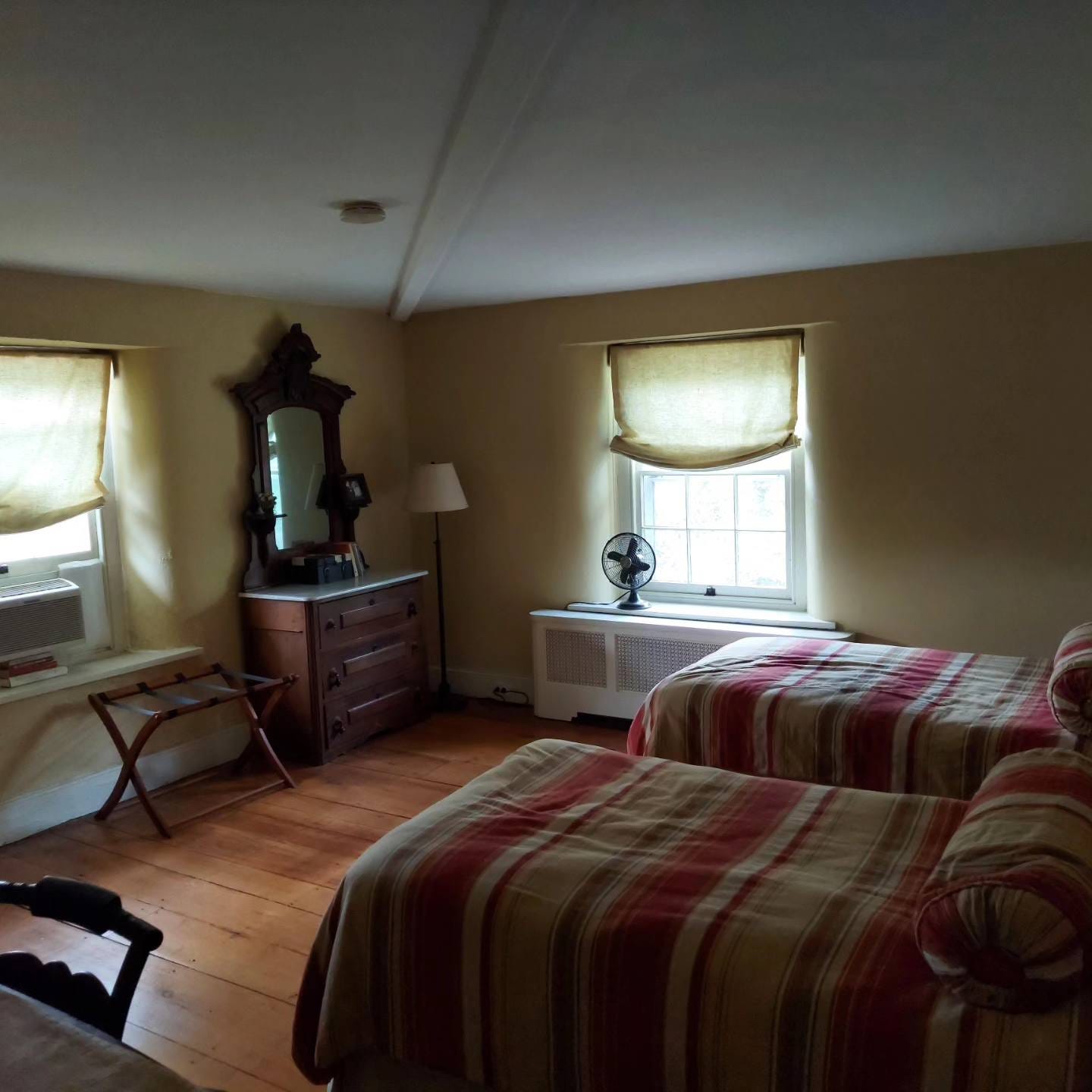
Young Stevie's bedroom at Highland Farm
Six by Sondheim. You can also see him pay it forward to young artists with the search term “Sondheim teaches” or by looking into the legacy of the old Young Playwrights Inc. program he helped found in 1981 (here is the YPI Facebook page - Wikipedia doesn’t have, nor will it let me write, a YPI entry). When working with YPI toward the end of their run, I secretly hoped to one day express gratitude to Mr. Sondheim for the influence that program had on me and the hundreds of young playwrights programs it inspired. I imagine he knew the artistic impact, but I wonder if he was aware of the personal benefit. After all, the biggest take-away from my research is just how much taking young artists seriously in their work has encouraged their growth as individuals, let alone as artists - if in fact an artist is what they became.
Standing in the place where that all began with a child’s request was astounding. And it makes sense that it would happen there: The tour guide said the Hammersteins always had children around the house and you could almost feel the love present even now. There are great things in store for Highland Farm and the Hammerstein Museum and Theatre Education Center. I cannot wait to return as they renovate the house and establish an education center on the property. There couldn’t be a more fitting monument to Hammerstein’s legacy than that!
Note: Since publishing this post on the Young Artists Guide, the OHMTEC has finalized the purchase of Highland Farm and begun the process of raising funds for the next phrase of development.

Comments
Post a Comment
Thanks for your comments. The page moderator will review them soon!